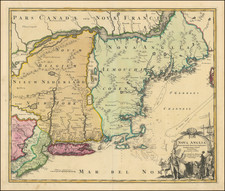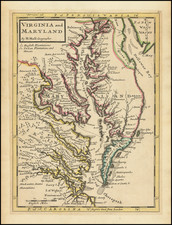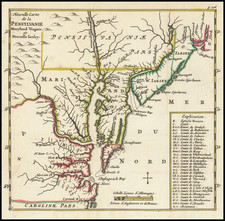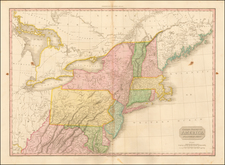A Revolutionary War Officer Sells Land in the Northern Liberties Neighborhood of Philadelphia.
Finely drafted Indenture for the transfer of land in the Northern Liberties of Philadelphia between Peter Browne and Andrew Frazer, including a signature of Reading Howell and manuscript map identifying the land then being transferred (April 24, 1804).
The indenture memorializes the sale of land in the Northern Liberties to Andrew Frazer by Peter Browne for $22,000 dollars, secured by a Mortgage given by Nathaniel Browne (Blacksmith).
The land discussed in the indenture would have been well-located in its day. It was in a central Philadelphia neighborhood and had easy access to the Old York Road. That road, which ran to Elizabethtown, New Jersey, was a primary thoroughfare between New York City and Philadelphia. Travellers could cross by boat to New York from Elizabethtown.
The map shows a street layout that predates the development of 6th Street (it is shown as "proposed"), but shows an area southeast of 6th and Poplar.
Reading Howell
One of the witness signatories of the deed is Reading Howell, the famed Pennsylvania mapmaker. This connection raises the intriguing possibility that Howell was involved in surveying the land covered in the deed. The map itself is not signed by Howell, but the possibility that it was drawn by his hand is real.
Little is known about Howell's life and career. He was a surveyor and landowner, who was appointed one of three commissioners to explore the headwaters of the Susquehanna, Lehigh and Schuylkill Rivers. He produced a 4 sheet map of Pennsylvania in 1791, the first full map of the state.
Peter Browne
Peter Browne (1751-1810) was a Revolutionary War Militia Army Officer. During the Revolutionary War he commanded a company in the 1st Pennsylvania Militia Regiment of Artillery, being commissioned its Captain on September 11, 1777.
Peter Browne was born September 18, 1751, in the Northern Liberties, Philadelphia county, Pennsylvania, and was a son of Nathaniel and Mary Browne.
Peter Browne accumulated a large fortune by furnishing the iron work for ships. Peter Browne built the machinery for the first steam craft in the world, the vessel constructed by and for John Fitch, the real inventor of steam boat navigation. Mr. Browne vigorously supported the cause of the colonists during the Revolution, serving as a captain in the artillery.
After the war, he held among other offices that of County Commissioner for Philadelphia County and justice of the peace. Among social organizations with which he was identified was the famous State in Schuylkill which he joined March 29, 1786, and of which he was at one time a coroner and at another a counsellor. He belonged to the Schuylkill Fishing Company, and was chosen, January 23, 1801, a member of the Society of the Sons of St. George. He was one of the managers of the Pennsylvania Hospital, and was active in religious and philanthropic movements.
Browne was an intimate friend of Dr. Benjamin Rush who, in a letter to Mr. Browne during the epidemic of yellow fever in Philadelphia in 1798, said: "Be assured, my good friend, that even a dog belonging to Peter Browne should not be neglected by me."
Mr. Browne married Sarah Dutton in 1773, daughter of Isaac and Mary (Coats) Dutton, the latter a daughter of John Coats, of a well-known family of Northern Liberties. Mr. Browne's shop was at Kensington, but his residence was at 141 North Front street, at that time an exceedingly fashionable neighborhood.
The independent nature of Peter Browne was strikingly manifested in his refusal to use the arms to which he was by descent entitled and in devising an escutcheon of his own. This consisted of a large anvil with two pairs of naked arms in the act of striking, the motto being "By this I got ye," meaning that by the ironmonger's trade he gained his fortune.









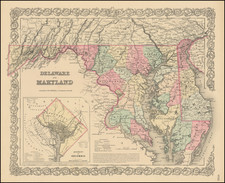
![[Jefferson's Notes on the State of Virginia] Observations sur la Virginie [with the map:] A Map of the country between Albemarle Sound, and Lake Erie, comprehending the whole of Virginia, Maryland, Delaware, and Pensylvania, with parts of several other of the United States of America. Engraved for the Notes on Virginia.](https://storage.googleapis.com/raremaps/img/small/51828.jpg)
